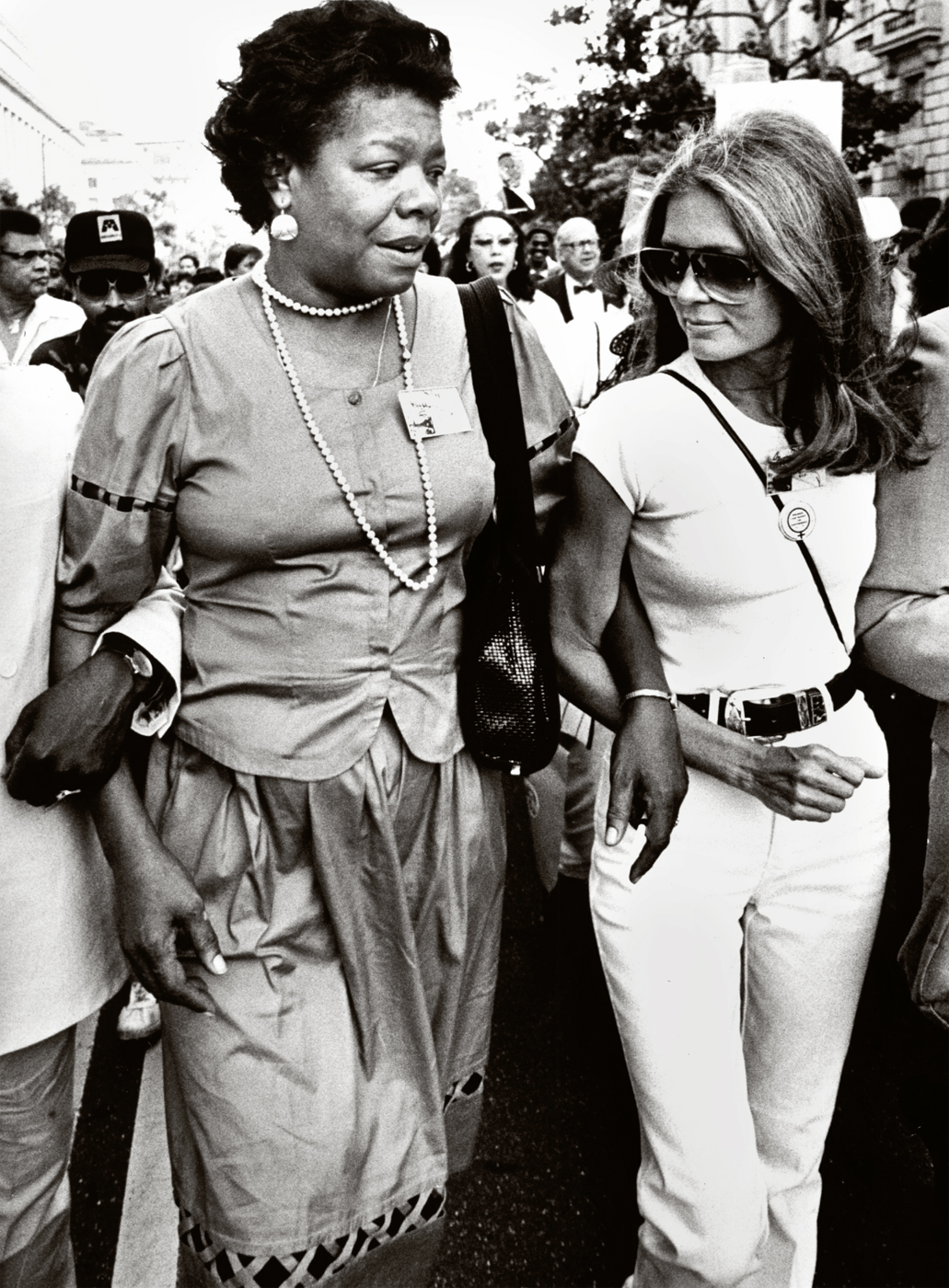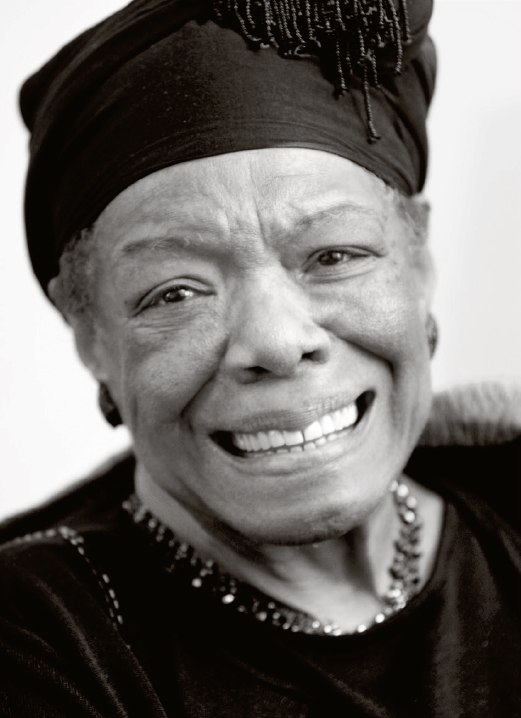Seek the fashion which truly fits and befits you. You will always be in fashion if you are true to yourself, and only if you are true to yourself.
—Maya Angelou, Wouldn’t Take Nothing for My Journey Now, 1993
Maya Angelou spoke words of gratitude and freedom in her prose, poetry, and civil rights speeches. She had a forgiving, joyful heart and lived her life doing the right thing. Releasing an album called “Miss Calypso” in 1957, she wrote and performed her own music in 1957 and sang and danced around America.. Today her voice resonates still. Maya died at the age of eighty-six in 2014, and the planet mourned the passing of an extraordinarily gifted and loving life inspiration.
From her character to her clothes, Angelou was always interesting. As a young girl in the ’50s, working as an actress and singer, she strode out in chic cocktail dresses and kitten heels, beatnik leotards, and capri pants. She performed in Jean Genet’s The Blacks off-Broadway, studied modern dance with Martha Graham, and in 1952 went on the road around Europe with a Porgy and Bess production in which she played the part of Clara. Angelou’s sense of self always manifested in her wardrobe, and that wardrobe was always elegant. She forever looked together.

Getty Images: The Washington Post
Maya Angelou and Gloria Steinem en route to the March on Washington, 1983.
When she moved to Cairo in 1960 with her husband, the civil rights campaigner Vusumzi Make, she worked on an Arabic newspaper as the English editor, and she then went on to Ghana, where she found time to learn several languages, including Arabic and Fanti. Brilliant print and patterned sarongs and scarves became her signature style in the African heat. This look evolved into loose-fitting batik sundresses accessorized with statement beaded necklaces when she moved back to the States in 1964 to help Malcolm X and later Dr. Martin Luther King Jr. with their work. Her proud cultural dress conveyed a dignified and significant unity with traditions.

Alamy Stock Photo: Sherratt, Adrian
Maya Angelou, 2005.
In 1993, when Bill Clinton was elected president of the United States, she became the first female writer to recite a poem at a president’s inauguration. She read her poem “On the Pulse of Morning,” a heartfelt testimony that all colors, creeds, and religions in America can stand firm together. She spoke for everyone who was disenfranchised. In 2010, President Barack Obama awarded Angelou the highest civilian honor: the Presidential Medal of Freedom.
Looking smart and feeling good was one of Angelou’s trademark attractions. A year before her death, she was photographed for the Cole Haan 1928 campaign and lay down the gauntlet for looking great at eighty-five years old. Clothes were important to Angelou. In the opening pages of her 1969 bestselling autobiography, I Know Why the Caged Bird Sings, she describes the awkward purple dress she is wearing and how desperately she wanted to feel like a “movie star,” and instead realizes that she is wearing “a plain ugly cut-down.” She intrinsically understood the shielding nature of clothes.
Angelou’s poem “Phenomenal Woman” was first published in Cosmopolitan in 1978 and introduced the world to her style of feminism. The words tell how proud she was of her body, her hair, and the “click” of her heels—and in writing them she empowered different shapes, sizes, and realities of women everywhere. As a public speaker, she dressed to impress. Little black dresses with elegant polo-neck sweaters accessorized with pearls and earrings were her favored outfit. She told not just women and black people to “ask for what you want and be prepared to get it”—it was a message for outsiders everywhere. She had high expectations for everyone, and she expected life to deliver decency.
Dr. Martin Luther King Jr. died in 1968 on April 4, Angelou’s birthday. She didn’t celebrate her birthday on that day for many years afterward.

The dress I wore was lavender taffeta, and each time I breathed it rustled, and now that I was sucking in air to breathe out shame it sounded like crepe paper on the back of hearses.
As I’d watched Momma put ruffles on the hem and cute little tucks around the waist, I knew that once I put it on I’d look like a movie star. (It was silk and that made up for the awful color.) I was going to look like one of the sweet little white girls who were everybody’s dream of what was right with the world. . . . But Easter’s early morning sun had shown the dress to be a plain ugly cut-down from a white woman’s once-was-purple throwaway. It was old-lady-long too, but it didn’t hide my skinny legs, which had been greased with Blue Seal Vaseline and powdered with the Arkansas red clay. The age-faded color made my skin look dirty like mud, and everyone in church was looking at my skinny legs.
—Maya Angelou, I Know Why the Caged Bird Sings, 1969